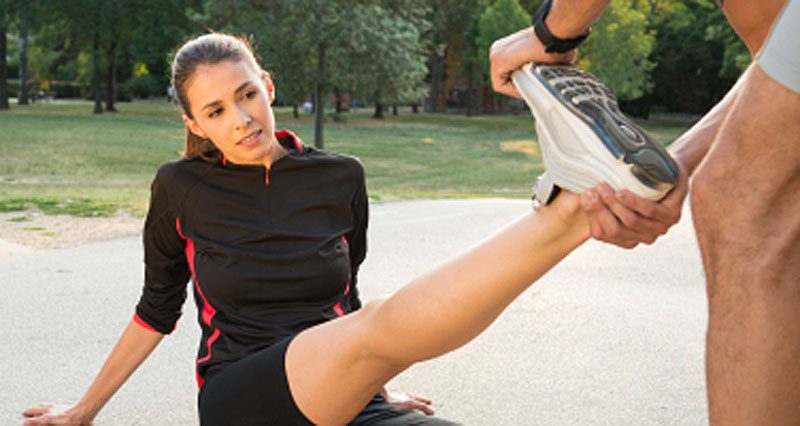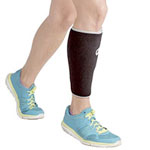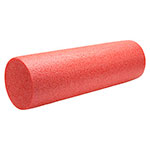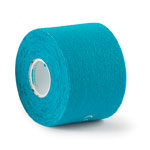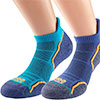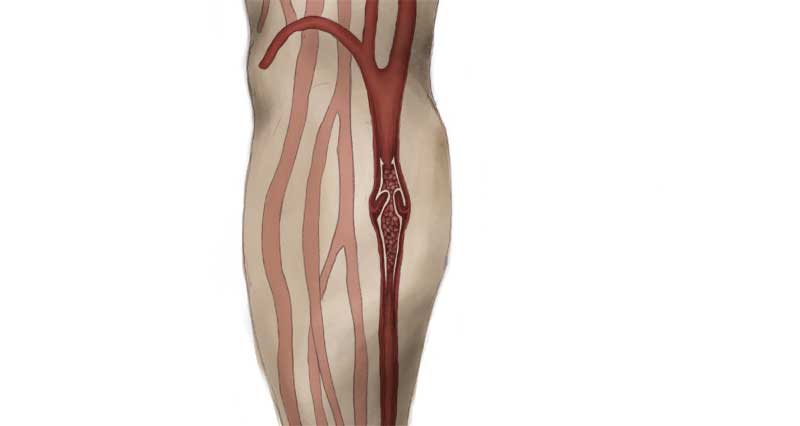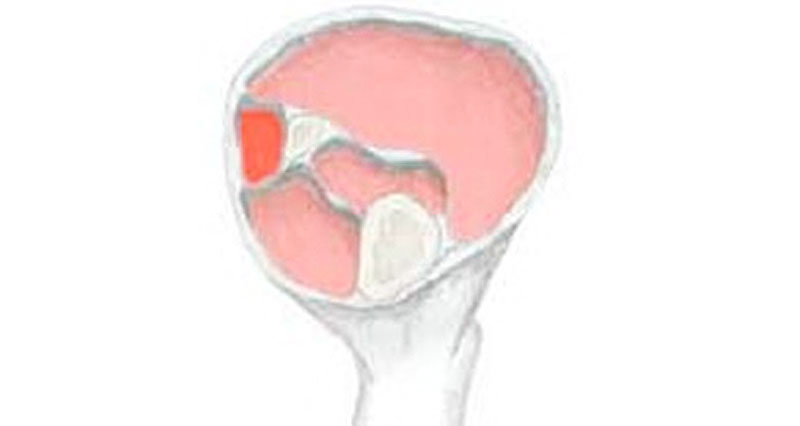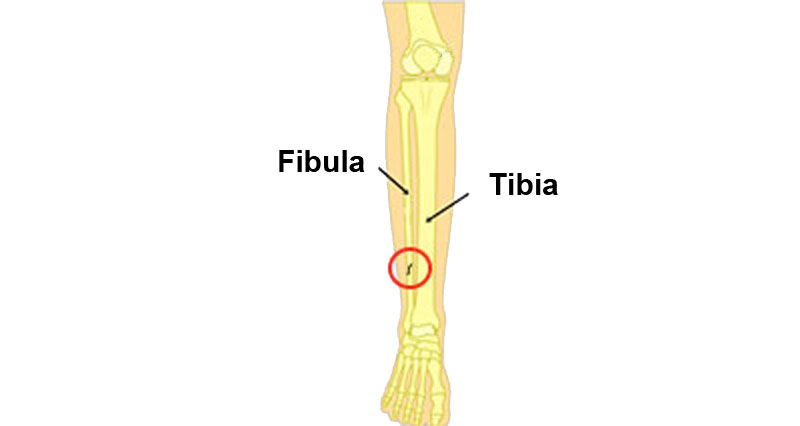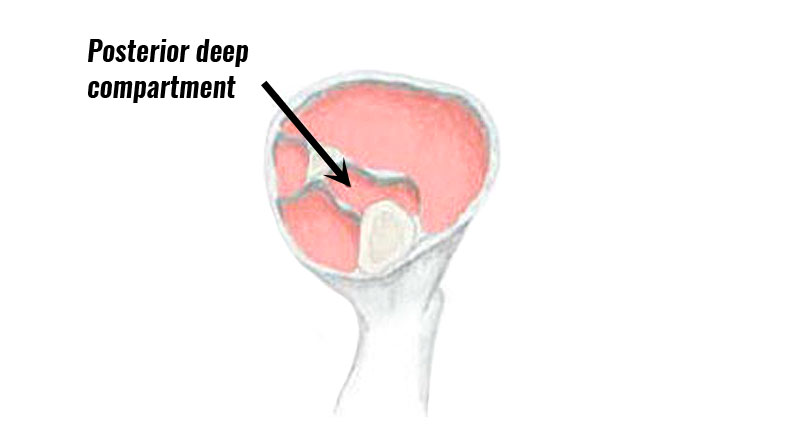Tight calf muscles at the back of the lower leg are a common problem in athletes, especially those who run long distances. Here we explain the causes and exercises for tight calf muscles.
What are the calf muscles?
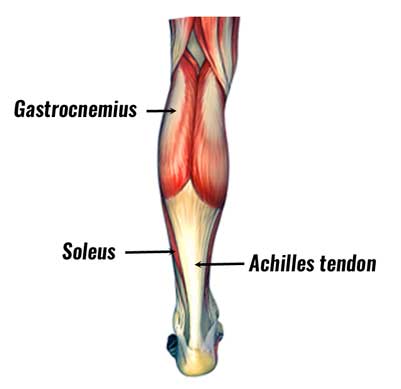
The calf muscles consist of the gastrocnemius muscle and the soleus muscle.
Gastrocnemius
The gastrocnemius muscle is the larger of the two muscles. It originates above the back of the knee and attaches to the back of the heel via the Achilles tendon.
You need to keep your knee straight to stretch the gastrocnemius muscle.
Soleus
The deeper soleus muscle originates from below the knee, also attaching to the back of the heel.
To stretch the soleus muscle you need to bend the knee.
Have I got tight calf muscles?
A physical sign of tight calf muscles is a gradual tightening of the calf muscles over time. It may get worse whilst running, or improve while running only to tighten up later.
Palpating (feeling) the muscles may identify tight lumps or bumps. Or areas of spasm where the muscle fibres have tightened up. These will be painful and tender to touch.
Assessing calf muscle flexibility
Your physio can assess calf muscle flexibility. However, what is right for one athlete may not be the same for another.
One method is to sit with your legs out in front. Your physio applies a gradual stretch to the muscle. They should feel a point where resistance noticeably increases as the muscle begins to stretch. It is likely your physio feels this before you actually feel a stretch yourself.
Soleus muscle assessment
Soleus muscle flexibility is measured with your knee bent.
What causes tight calf muscles?
Tight calf muscles may be caused by a combination of issues.
Lack of stretching
Tight calf muscles may have developed gradually over a period of months by not stretching enough before and after training. Tiny micro-tears in the muscles cause them to go into spasms. When they are in spasm or contracted then blood cannot easily get into them.
The muscles have squeezed the blood out like a sponge. If the muscles do not get enough blood then they will not get enough nutrients and so will tighten up to protect themselves and weaken and so on.
Failing to stretch regularly can result in adaptive shortening and one of the most common causes of tight calf muscles is wearing high heels. Wearing heels on a regular basis causes adaptive shortening of the muscles.
Foot biomechanics
Biomechanical problems of the foot or from running style can increase the strain on the calf muscles. Overpronation is when the foot rolls in too much or flattens.
This results in repetitive strain and overuse. An injured muscle may tighten up to protect itself. Gait analysis on a treadmill can identify this and orthotic inserts may be prescribed to correct this.
Compartment syndrome
Compartment syndrome occurs when the muscle becomes too big for the sheath surrounding the muscle causing pressure, sometimes pain, and restricted movement.
How do I improve calf flexibility?
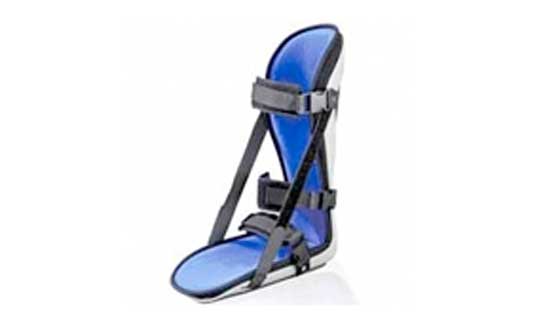
Have the flexibility of your muscles tested and undertake a course of regular calf muscle stretching exercises. These should be continued for at least 6 weeks.
See a sports massage therapist for deep tissue massage. Depending on how bad it is you might need three or more treatments. It is important the gap between treatments is not too long as the benefits may be reduced between sessions.
Use a plantar fasciitis night splint. This is worn overnight and prevents your muscles from tightening up whilst you are asleep. The night splint may take a bit of getting used to but can be very effective for improving calf muscle flexibility.
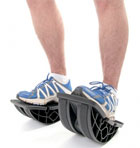
Try stretching with a calf stretcher. These come in various designs. The slant board type is good for being a bit more scientific about your stretching. In particular, it makes measuring your progress easier. A rocker-type calf stretcher is very effective at achieving a very deep stretch.
Why do I stretch but seem to get nowhere?
You might not be stretching enough even though you think you are. You might be stretching too hard. If you force the muscle the stretch reflex is triggered which contracts it. By going against this you are damaging the muscle. Stretch gently, do not bounce, ease into it, and feel the muscle stretching.
If it is just one leg that is tight you could have pressure on the sciatic nerve which causes the tightness. You should get this sorted out first by visiting a professional practitioner.
It might be you have compartment syndrome. If pain or tightness comes on during a run and eases when resting this may be a possibility.
Try the plantar fasciitis night splint which is worn on the foot overnight and is very effective in preventing the calf muscles from tightening up overnight.
Calf muscle stretching exercises
The calf muscles consist of the larger gastrocnemius muscle and the soleus muscle which is located deeper and lower down the leg. To effectively stretch both muscles, perform exercises with the knee bent as well as straight.
Gastrocnemius stretch
To stretch the big gastrocnemius muscle in the back leg keep your knee extended. Stand with the back leg straight, hands on a wall at shoulder height. Bend the front knee and lean forward, keeping the back knee straight and pushing the heel down to the floor.
You should feel a gentle stretch on the back leg.
When you can feel a stretch, hold for 20 seconds. If the stretch eases, lean further forwards until you can feel it again. But do not push too far in the early stages. Perform 3 repetitions and repeat this 3-5 times a day.
Soleus stretch
Stretch the deeper soleus muscle with your knee bent. This is because the soleus muscle attaches below the knee and bending the knee allows the gastrocnemius muscle to relax leaving the soleus on the stretch.
Lean against a wall with the back leg bent. Bend the knee further, keeping the heel in contact with the ground. You should feel a gentle stretch at the back of the lower leg.
Hold for 15 to 20 seconds and repeat three times.
If you do not feel a stretch then place the ball of the foot against the wall and bend the front knee.
Sports massage for tight calf muscles
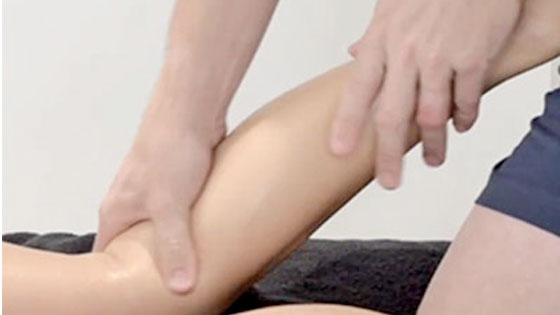
Sports massage can help relax tight muscles, improve flexibility and the overall condition of a muscle.
Before starting any massage the therapist checks for contraindications. If any apply then massage is not suitable.
The aim of sports massage is to release tension in the muscle and stimulate blood flow and healing. More details on the benefits of sports massage are available.
External links
- Buy Calf stretching Plantar Sock at UPMedical.co.uk
